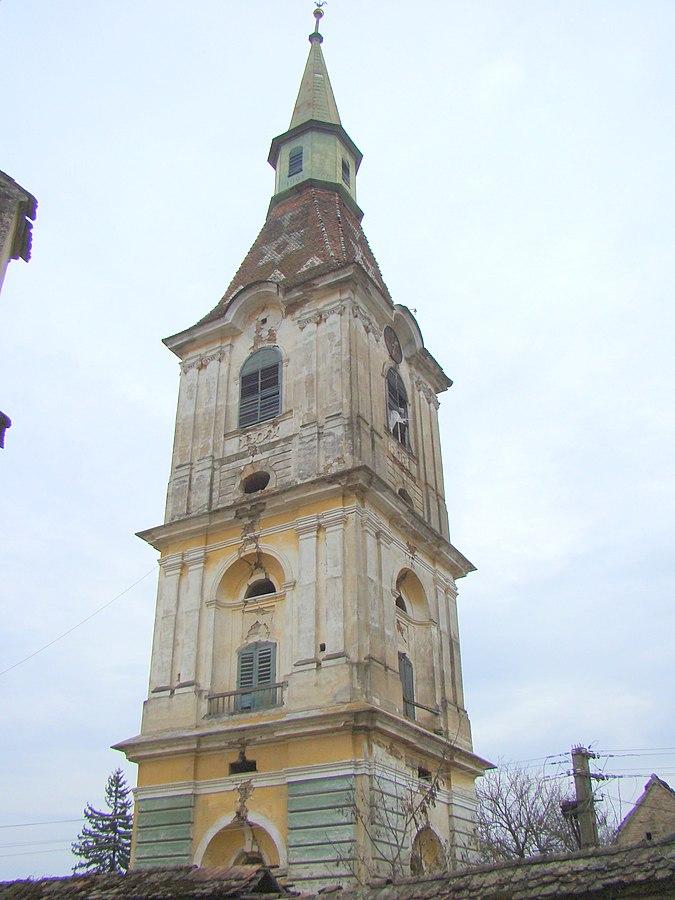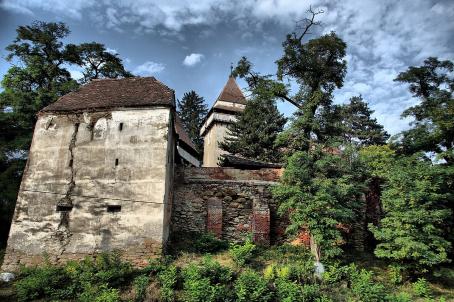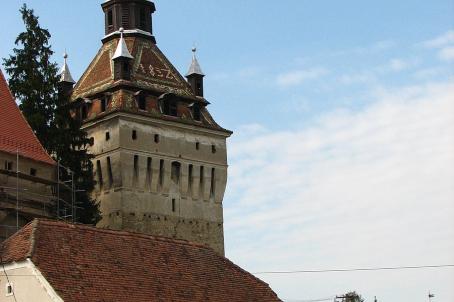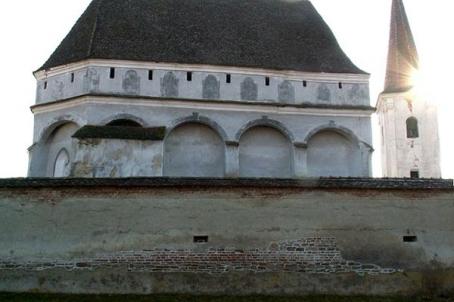Daia Fortified Church
The completion of the first hall church in Daia occurred in 1447 according to its mentioning on the keystone in the chancel. The church had no tower at the time, which was only added in the western part during the fortification works in the beginning of the 16th century. Later it was dismantled until it reached the height of the nave. In the same fortification phase, a defense level was built above the chancel and the church was surrounded by a ring wall, strengthened by two fortified buildings. The western one is nowadays a ruin, but the eastern one still preserves a good image of the typical storage construction equipped with defensive systems.
In the 19th Century the defensive systems of the ensemble were dismantled step by step, but outside the fortification an impressive freestanding neo-classical campanile, considered to be one of the highest in the country was built between 1829 and 1834. The hall of the church was covered with a flat ceiling in 1884, but the chancel still preserves its late Gothic ripped vault. After the ensemble was closed for regular church service, only the galleries and the pews remained inside.
About this building
For more information visit on this building visit https://kirchenburgen.org/en/location/denndorf-daia/






